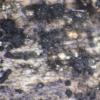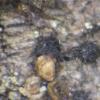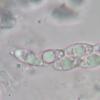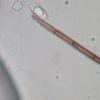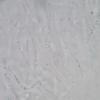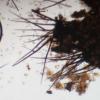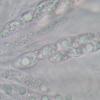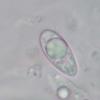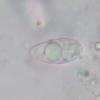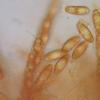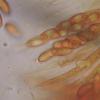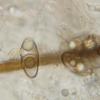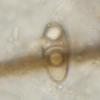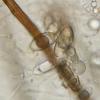
31-12-2025 19:27
Collected from loamy soil, at waterside (completel

30-12-2025 16:44
Pascal DucosBonjour,Une anamorphe rose stipitée, très nombre

30-12-2025 17:14
 Bernard CLESSE
Bernard CLESSE
Bonjour à toutes et tous,Pourriez-vous aider Albe

29-12-2025 10:15
Hulda Caroline HolteHello, I found and collected this propoloid ascom

30-12-2025 09:04
Hello.A Pyrenomycete sprouting sparsely but very d

29-12-2025 17:44
Isabelle CharissouBonjour,J'aimerais savoir si d'autres personnes au

12-11-2021 00:03
Lepista ZacariasHi everybody,A week ago in my fiels trip I noticed
Setose pyrenomycete
Gernot Friebes,
07-07-2015 13:30
here is the second fungus. Again a short description:
On decorticated parts of a branch of presumably Fagus. The ascomata have long, dark setae that are slightly bent upwards. The asci are biseriate, negativ in IKI and very delicate. They measure about 80-100 x 12-15 µm. The ascospores are oval, filled with one big and a few smaller drops and measure about 14-16 x 6-7 µm. They are again rather delicate and tend to collapse quickly when observed in water. The paraphyses are filiform.
Thanks and best wishes,
Gernot
Björn Wergen,
10-07-2015 15:32

Re : Setose pyrenomycete
Hi Gernot,
quite interesting, Zaca (portugal) postet a rather similar species in April, I have studied it. But Ascus tips react blue in IKI. Are you sure not to have seen any reaction?
I have identified the collection as Lasiobertia sp, but there was no described species fitting. Without ascus porus reaction, I think your one belongs to Coronophorales.
regards,
björn
quite interesting, Zaca (portugal) postet a rather similar species in April, I have studied it. But Ascus tips react blue in IKI. Are you sure not to have seen any reaction?
I have identified the collection as Lasiobertia sp, but there was no described species fitting. Without ascus porus reaction, I think your one belongs to Coronophorales.
regards,
björn
Gernot Friebes,
11-07-2015 00:50
Re : Setose pyrenomycete
Hi Björn,
thanks for sharing your opinion. It is really quite a peculiar fungus! In the meantime Martina Réblová wrote to me that she believes that this species is Phaeotrichosphaeria britannica. For illustrations and a description see http://www.cybertruffle.org.uk/cyberliber/59351/0081/002/0320.htm. I will check the material to see if the ascospores are indeed finely echinulate.
Best wishes,
Gernot
thanks for sharing your opinion. It is really quite a peculiar fungus! In the meantime Martina Réblová wrote to me that she believes that this species is Phaeotrichosphaeria britannica. For illustrations and a description see http://www.cybertruffle.org.uk/cyberliber/59351/0081/002/0320.htm. I will check the material to see if the ascospores are indeed finely echinulate.
Best wishes,
Gernot



